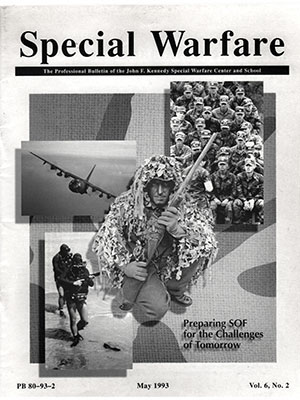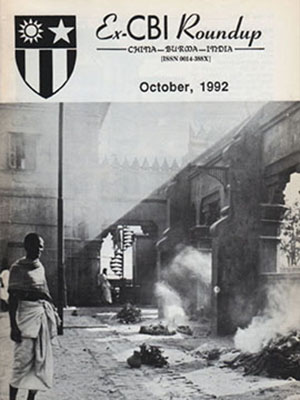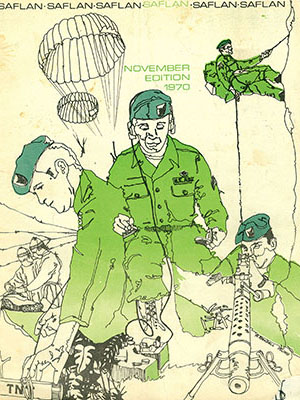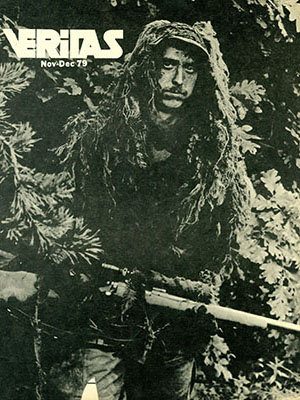DOWNLOAD
The preceding article, “A Clearer View of Psywar at Ft Riley & Ft Bragg, 1951-1952,” showed how the 6th Radio Broadcasting & Leaflet Group (6th RB&L) weekly newsletter, The Psyn-post, yielded information and insights on Psywar training in 1951 and 1952 and activities of an original U.S. Army Psychological Warfare Center element that formed at Fort Riley, KS. The research methodology behind that article merits sharing to emphasize our most critical element, the Army veteran. He/she usually provides the first opening to the little known or long-forgotten Army units. That was exactly how the 8th Mobile Radio Broadcasting Company was recalled after 50+ years.
One such veteran was former Corporal (CPL) Henry Bast of New Rochelle, NY. Drafted in February 1951, he served in the 5021st Psywar Detachment and the 8th MRBC at Forts Riley and Bragg until February 1953. After keeping almost all unit publications and military records from his two-year service for 50 years, Bast gave them to Mr. Douglas Elwell, the 4th PSYOPS Group Technical Advisor. A quick review of his Psyn-post collection led to a telephone interview in which Bast provided the name of another unit draftee veteran, former SGT Alan H. Smith, a Syracuse University graduate, who had considerable radio and television experience.1 That prompted a thorough, serious note-taking review of The Psyn-posts.
The Psyn-post was first published by the 5021st Psychological Warfare Detachment at Fort Riley on 16 January 1952 as the Weekly, a unit newsletter.2 According to LTC Frank A. McCulloch, the 5021st commander, the intent was to share facts and humor that in time would become a record of missions and accomplishments.3 That purpose was achieved.
Telephone interviews with both men yielded access to their service records, memorabilia, and photographs. But, because they were not career soldiers, views and impressions were limited to their two years of service fifty years ago. The Psyn-post collection, however, facilitated expanding the search for more 8th MRBC information. Going on the premise that majors and above and senior noncommissioned officers (NCO) who served in the 1950s were likely deceased, lieutenants and captains having unusual first and/or last names mentioned or pictured in The Psyn-post became the focus of internet searches (White Pages and Zaba Search). The final step was “cold calling” the most likely candidates.
This led to former First Lieutenants (1LTs) William D. Dana, Jr., 12th Consolidation Company and Peter A. DeFranco, the 5021st Psywar Detachment and 6th RB&L Reproduction Officer in Morristown, NJ, and Burnsville, NC, respectively. Interviews were arranged.4 Each individual received several copies of Veritas to show legitimacy, validate the research effort, and to demonstrate genuine interest and professional knowledge, promoting further interviews.
The “mother lode” was discovered when retired USAR Major Nevin F. Price was found in Rockville, MD. Not only was Price an 8th MRBC commander, he had served in Korea with the 4th MRBC (1st RB&L) in Pusan afterwards. He had original newspaper articles that described the 8th MRBC mission to train the 306th RB&L (USAR) at Fort MacArthur, CA, photos, and most importantly, a T/D (Table of Distribution).5 Price remembered CPL Hans Ulander because the two had worked together on several projects and missions. He said that the draftee Swede had advanced electrical and mechanical engineering degrees, very uncommon in the 1950s. After collecting Price’s prior service and WWII background and interviewing Ulander, it was obvious that the 8th MRBC was not a war-driven “thrown together” Psywar unit.6 With the wealth of information from The Psyn-post verified and expanded during interviews there was sufficient material accumulated for a cogent, well-documented article on the 5021st Psywar Detachment and the 8th MRBC, an original 1950s Smoke Bomb Hill unit belonging to the 6th RB&L.
The preceding article, however, is only a starting point. The specific personnel and equipment T/Ds and/or TO&E for the 8th MRBC have to be found, along with veterans from a MRB platoon and linguists. While this effort focused on the 8th MRBC, The Psyn-post provided a wealth of information on the 5021st Psywar Detachment, the courses taught by the Psywar Division, Army General School from 1950-52, and the 6th RB&L Group and its units. But, the Psywar Board, Psywar School, the 12th Consolidation Company, and 9th L&L Company are big unknowns. All could be future Veritas articles, providing missing links in the lineage and heritage of today’s Army PSYOP units. Veterans were and are still the key to opening closed doors of other units.

Post Script for Veterans
Unit newsletters, anniversary pamphlets, yearbooks and newspapers are important for historical research by the USASOC History Office. As explained they provide reality and key details often omitted in official documents and publications. Considered personal memorabilia by most veterans, we recognize that these items (especially those containing articles in which the veteran is named) are “treasured.” Donations are always welcome, whether you have two or 200. However, we are prepared to scan copies (returning originals with a CD) if you are not ready to part with them. Please do not throw them away as garbage. While you might make your wife or girlfriend happy, it’s your history that will be destroyed. We’ll even pick them up.
Here are some of the newsletters, newspapers, and veteran association publications that will help us better capture and present ARSOF history: old issues of SAFLAN, The Liberator, Ex-CBI Roundup, The Sentinel, Sine Pari, Special Warfare, the BOD, 14th RB&L Battalion & 7th PSYOPS Group Veritas and Shurei No Hakari.
Bottom Line, if it was produced by an ARSOF unit or heritage unit, we are interested. Contact us, thanks.
ENDNOTES
- Former CPL Henry Bast, telephone interview by Dr. Charles H. Briscoe, 22 May 2009, New Rochelle, NY, digital recording, USASOC History Office Classified Files, Fort Bragg, NC. [return]
- 5021st Psychological Warfare Detachment A.S.U., Fort Riley, KS, Weekly, Vol I, No 1, 16 January 1952 in the personal files of former CPL Henry Bast, USASOC History Office Classified Files, Fort Bragg, NC, hereafter simply Weekly with appropriate citation. [return]
- Weekly, Vol. 1, No. 2, 23 January 1952. [return]
- Former LTs William D. Dana, Jr. and Peter A. DeFranco, telephone interviews by Dr. Charles H. Briscoe, 19 September 2009, Morristown, NJ, and 29 September 2009, Burnsville, NC respectively, digital recordings, USASOC History Office Classified Files, Fort Bragg, NC and 5021st Psychological Warfare Detachment, Ft Riley, KS, The Psyn Post, Vol. 1, No. 20, undated (May 1952). [return]
- Retired MAJ Nevin F. Price, telephone interview by Dr. Charles H. Briscoe, 18 September 2009, Rockville, MD, digital recording, USASOC History Office Classified Files, Fort Bragg, NC. [return]
- “Public Gets First Look At ‘Psywar’ Equipment” and Fort MacArthur Soldier ‘Attends’ Party in Sweden,” Fort MacArthur News, Friday, 13 February 1953, Vol. V, No 1, 1,3 and Hans Ulander, telephone interview by Dr. Charles H. Briscoe, 21 October 2009, Wicomico, VA, digital recording, USASOC History Office Classified Files, Fort Bragg, NC. [return]





